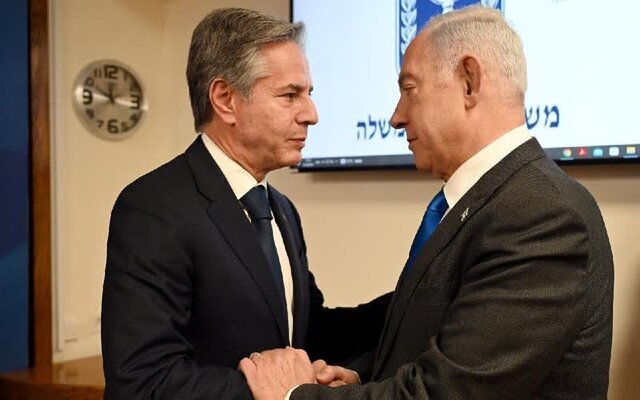Resolution in deadlock; Why does Hamas not agree to the ceasefire plan?
Biden’s unveiling of the three-stage ceasefire plan, the approval of Resolution 2735 in the UN Security Council, and the increase in speculations about Israel’s possible attack on southern Lebanon were the excuses for the eighth visit of US Secretary of State Anthony Blinken to the Middle East region. Democrats are interested in ending the war in Gaza before the 27th of June and the start of the Summer Olympics in Paris. In this equation, due to Washington’s disregard for some legitimate demands of the Palestinian side, the chance of success of this plan has been greatly reduced and the possibility of full acceptance of this plan by the Palestinian resistance has been denied. Some analysts believe that the Americans, by not paying attention to the main demands of Hamas, are trying to so-called “drop the ball in the ground” of the resistance and remove the label of warmongering from the Israeli authorities. The key point is that if the Palestinian resistance accepts a truce that does not pay attention to the demand for an end to the war, it will provide the ground for the Zionists to march to the northern front. In the continuation of this note, we will try to answer the question, why is the Hamas movement not in favor of a ceasefire?
Resolution 2735 of the Security Council; Continuation of Biden’s plan
According to the United Nations, Security Council Resolution 2735 was approved by Russia with 14 votes in favor and 1 abstention. This resolution, inspired by Biden’s three-step plan, emphasizes the strict implementation of the entire end of the war in Gaza. In the first phase of the immediate ceasefire, the release of the civilian hostages and the return of the bodies of the dead prisoners are on the agenda. In the second stage, the complete exchange of prisoners in exchange for the permanent end of the conflicts and the withdrawal of Israeli forces from Gaza has been considered. In the third phase of the large multi-year plan for the reconstruction of Gaza, attention has been paid.
Positive vote of the Security Council to Resolution 2735
In the continuation of this resolution, it is stated that after the implementation of the first phase, if the negotiations for the implementation of the second phase take more than six weeks, the ceasefire will continue automatically. During this time, the Security Council is against any action to mix the population and reduce the territory of Gaza by the Israeli side. Before the vote to approve this resolution, the American representative in the Security Council announced the initial agreement of the Zionist regime with this plan and asked the Hamas movement to adopt the policy of “escape forward” to immediately accept this plan. This issue is raised while after the trip of Brett McGurk and William Burns to the region to follow up on Biden’s three-phase plan, the hard-line forces in Netanyahu’s cabinet threatened him that if he agrees to a long-term ceasefire in Gaza in the current situation, they will remove him from the cabinet. They will go out and prepare the ground for the downfall of the government. This scenario has gained strength after the departure of Benny Gantz from the cabinet and then the dissolution of this structure by the Prime Minister himself.

